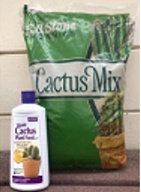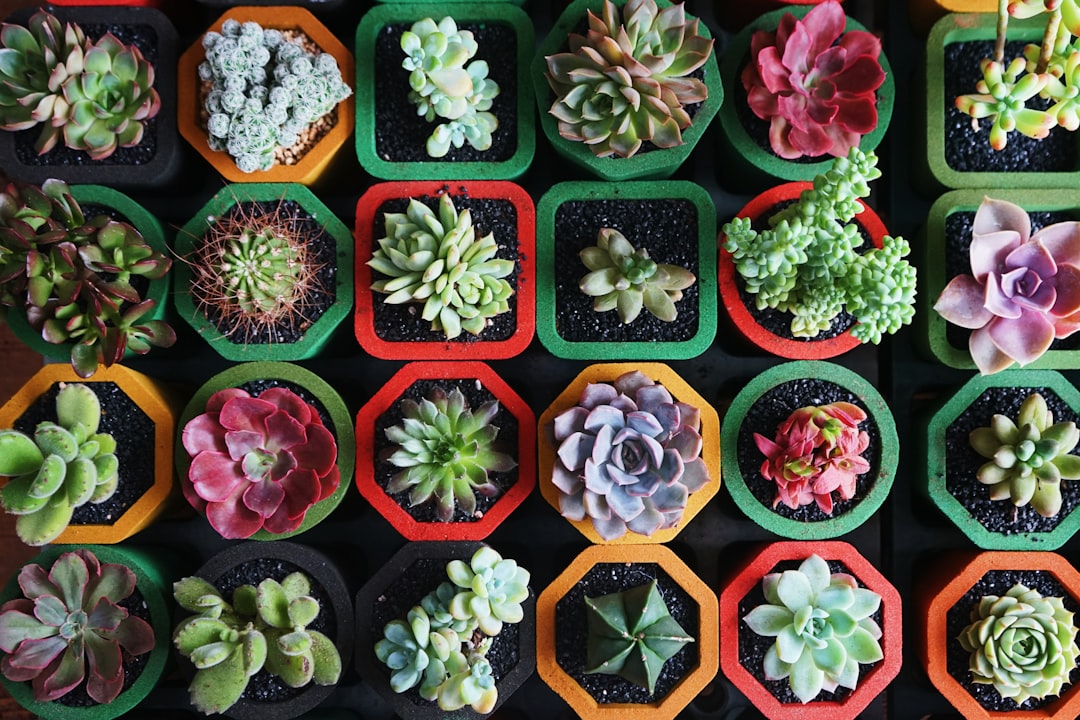The Succulent Care Guide

In botany, succulents are plants that have some parts that are more than normally thickened and fleshy, usually to retain water in arid climates or soil conditions. The word "succulent" comes from the Latin word sucus, meaning juice, or sap. Succulents vary widely in their need for light, water, and nutrients. Below are general guidelines that can help you care for your plants.
Lighting Requirements:
Generally succulents flourish in hot, dry climates and love plenty of sunlight. Depending on what type of plant you have chosen, , most will need a full day of sunlight, or at least a half day of bright afternoon shade in areas that are very hot. A few sedum varieties will go dormant in the winter, ask if you aren't sure. If growing your plant indoors, make sure it gets lots of bright light. For best growing results, place near a window that gets light all day. Without enough light you may see your succulents stretch or look "leggy" as if they're reaching for the sun, this process is called Etiolation. This is characterized by long, weak stems and smaller leaves due to longer internodes. If you see your succulents showing this, move them to a brighter location.

Soil Requirements:
The best soil for succulents will hold enough water for them to absorb what they need, but will still dry out quickly so the roots won’t rot. Here at Mid City Nursery we recommend our E.B Stone Organic Cacti Mix. When planting in the garden, make sure the area drains well and is not in a low spot that would stay wet. For container planting use cactus soil or incorporate sand, perlite or pumice to your existing compost.
We highly recommend if planting in a container, that there is a drainage hole. If using a pot without drainage, use our volcanic charcoal on the bottom before filling with planting medium.
Water/Fertilizer Requirements:
Succulents are very drought resistant, but that doesn't mean that they don't require regular watering. Most planted in the ground only require once a week watering in hot conditions, and once every two weeks in the winter if we aren't getting rain. If growing in a container, plants like to be fully dry from top to bottom before watering. If not using a moisture meter to indicate when to water, stick your finger about an inch down in the soil. If it feels dry, it's time for a drink! Water thoroughly and give it a good soak until you see it come out the drainage hole at the bottom. Succulents usually don't require or need fertilizer to thrive, but if they need a little pep a light fertilizer once a month is fine. Use a liquid cactus food or diluted water soluble fertilizer.
Flowering:
Succulents all have different bloom times and colors ranging from pink, red and yellow. Sempervivums will bloom after the second or third year. A flower stalk will shoot up from the center of the main rosette with a cluster of flowers. After the flower dies, gently twist or cut off the stalk. The main rosette will put on new offsets that will fill in.
Common Problems:
Insects that can affect succulents are mealybugs, aphids, or spider mites. First try rubbing alcohol on a q-tip. If that isn't effective, we recommend Bonide Eight Insect Control. Be sure to remove damaged or old leaves to reduce the chance of harboring bugs or potential mildew issues.
